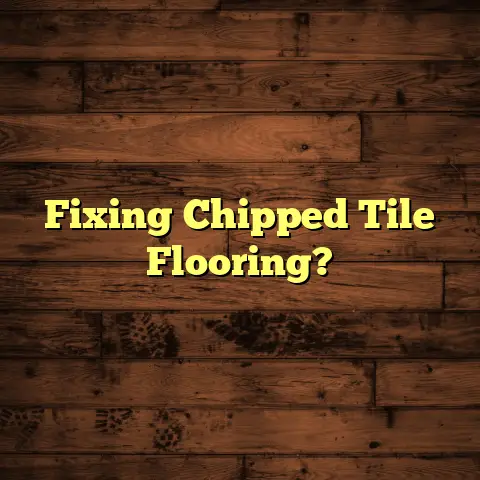Measure Vinyl Plank? (1 Common Error!)
I’m excited to talk about something near and dear to my heart (and my business): vinyl plank flooring.
It’s become incredibly popular, and for good reason.
It’s affordable, looks fantastic, and is surprisingly easy to install.
But before you rush out to buy those beautiful planks, let’s talk about something crucial: measuring.
Seriously, getting your measurements right can make or break your vinyl plank project, both aesthetically and financially.
And believe me, I’ve seen it all.
I’ve been a flooring contractor for over 15 years, and I’ve seen firsthand how a simple measuring mistake can turn into a costly headache.
Trust me, I am speaking from experience, and I don’t want you to fall into the same trap.
In this article, I’m going to share my expertise on measuring vinyl plank flooring, highlighting a common error that many homeowners make.
I’ll provide you with a step-by-step guide to ensure accuracy.
So, grab your measuring tape, and let’s dive in!
Section 1: Understanding Vinyl Plank Flooring
First things first, what exactly is vinyl plank flooring?
Well, it’s a type of resilient flooring that mimics the look of real wood.
But unlike hardwood, it’s made from synthetic materials, making it water-resistant and much more budget-friendly.
Think of it as the chameleon of the flooring world.
It comes in a variety of styles, colors, and textures.
You can find vinyl planks that look like oak, maple, hickory, and even exotic hardwoods.
And the best part? It’s much easier to maintain than traditional wood flooring.
A quick sweep and mop, and you’re good to go!
Now, let’s talk about the different types of vinyl plank flooring.
There are primarily two types:
- Luxury Vinyl Plank (LVP): This is the higher-end option, typically thicker and more durable. It often features a more realistic wood-grain texture and a more robust wear layer, making it ideal for high-traffic areas.
- Vinyl Plank (VP): This is the more budget-friendly option, generally thinner and less durable than LVP. It’s still a great choice for many homes, especially in areas with moderate foot traffic.
Cost Comparison
One of the biggest draws of vinyl plank flooring is its affordability. Let’s compare it to other popular flooring options:
| Flooring Type | Average Cost Per Square Foot (Installed) |
|---|---|
| Vinyl Plank | $3 – $7 |
| Laminate | $3 – $8 |
| Hardwood | $8 – $15 |
| Tile | $8 – $20 |
As you can see, vinyl plank flooring is significantly more affordable than hardwood and tile.
It’s comparable in price to laminate, but it offers better water resistance.
This makes it a popular choice for kitchens, bathrooms, and basements.
Aesthetics and Appeal
Beyond its affordability and durability, vinyl plank flooring is also a great way to enhance the aesthetics of your space.
It mimics the look of more expensive materials like hardwood and stone, allowing you to achieve a high-end look without breaking the bank.
I’ve had clients who were amazed at how closely vinyl plank resembled real wood.
They couldn’t believe they were getting such a beautiful floor for such a reasonable price.
Section 2: The Importance of Accurate Measurements
Okay, so you’re sold on vinyl plank flooring.
Now comes the crucial part: measuring.
Why is accurate measurement so important?
Well, let me tell you, it can save you a whole lot of money and frustration in the long run.
Think of it this way: measuring is like creating a roadmap for your flooring project.
If your roadmap is inaccurate, you’re going to end up lost and potentially stranded.
Cost Efficiency
Accurate measurements are directly linked to cost efficiency.
If you overestimate the amount of flooring you need, you’ll end up with extra material that you may not be able to return.
On the other hand, if you underestimate, you’ll have to make another trip to the store and potentially delay your project.
And let me tell you, nothing is more frustrating than being halfway through a project and realizing you’re short on materials.
Avoiding Costly Adjustments
Incorrect measurements can also lead to costly adjustments during installation.
If your measurements are off, you may have to cut planks in odd shapes to make them fit, resulting in wasted material and a less-than-perfect finish.
I’ve seen homeowners who had to completely redo sections of their flooring because they didn’t measure correctly.
Trust me, it’s not a fun experience.
Real-Life Examples
Let me share a couple of real-life examples to illustrate the importance of accurate measurements:
- Case Study 1: A homeowner I worked with decided to save money by measuring the room themselves. They underestimated the square footage by about 50 square feet. During installation, they ran out of planks and had to order more. The problem? The store was out of stock of the exact color and style they needed. They ended up having to settle for a slightly different shade, resulting in a mismatched floor.
- Case Study 2: Another homeowner overestimated the square footage by a significant margin. They ended up with several boxes of extra vinyl plank flooring. Unfortunately, the store had a strict return policy, and they were unable to get a full refund. They were stuck with extra flooring that they had no use for, essentially throwing money down the drain.
These examples highlight the importance of taking your time and measuring accurately.
It’s a small investment of time that can save you a lot of money and frustration in the long run.
Section 3: Common Errors in Measuring Vinyl Plank Flooring
Okay, let’s talk about the elephant in the room: common measuring errors.
I’ve seen a lot of them over the years, but there’s one that stands out above the rest:
Failing to Account for Irregular Room Shapes
This is, by far, the most common mistake I see homeowners make when measuring for vinyl plank flooring.
Rooms aren’t always perfect squares or rectangles.
They often have alcoves, closets, bay windows, or other irregular features that can throw off your measurements.
When homeowners fail to account for these irregularities, they end up with inaccurate square footage calculations.
This can lead to significant waste of materials and additional expenses.
Elaboration on the Oversight
Imagine you’re measuring a room that’s mostly rectangular, but it has a small alcove in one corner.
If you simply measure the length and width of the main rectangle, you’ll underestimate the total square footage of the room.
You’ll need to account for the additional area of the alcove to get an accurate measurement.
The same goes for closets, bay windows, and any other irregular features.
Impact on Project Budgets
This common mistake can have a significant impact on your project budget.
If you underestimate the amount of flooring you need, you’ll have to order more, potentially delaying your project and incurring additional shipping costs.
You may also have to settle for a different shade or style if your original choice is out of stock.
On the other hand, if you overestimate, you’ll end up with extra material that you may not be able to return.
Either way, you’re losing money.
Anecdotes and Quotes
Let me share a few anecdotes and quotes from industry professionals to illustrate the impact of this common mistake:
- “I once had a client who underestimated the square footage of their living room by about 100 square feet. They ended up having to order an entire pallet of extra flooring, which cost them several hundred dollars.” – John S., Flooring Contractor
- “The biggest mistake I see homeowners make is not accounting for irregular room shapes. They measure the main area and forget about the closets, alcoves, and other nooks and crannies.” – Sarah M., Interior Designer
- “Always add at least 10% to your square footage calculation to account for waste and cuts. It’s better to have too much than not enough.” – Mike R., Home Improvement Expert
These quotes highlight the importance of paying attention to detail and accounting for all irregular features when measuring for vinyl plank flooring.
Section 4: How to Measure Vinyl Plank Flooring Correctly
Alright, let’s get down to business.
I’m going to walk you through a step-by-step guide on how to accurately measure a room for vinyl plank flooring.
I will ensure that affordability remains a key theme.
Tools Needed
Before you start, you’ll need a few essential tools:
- Measuring Tape: A good quality measuring tape is essential for accurate measurements. I recommend one that’s at least 25 feet long.
- Pencil and Paper: You’ll need these to record your measurements.
- Calculator: A calculator will help you calculate the square footage of the room.
- Graph Paper (Optional): Graph paper can be helpful for drawing a rough sketch of the room and its irregular features.
Step-by-Step Guide
- Clear the Room: Remove all furniture and obstacles from the room. This will give you a clear and unobstructed view of the space.
- Draw a Rough Sketch: Use graph paper or plain paper to draw a rough sketch of the room. Include all walls, doorways, closets, alcoves, and other irregular features.
- Measure the Length and Width: Measure the length and width of the main area of the room. Record these measurements on your sketch.
- Measure Irregular Features: Measure the length and width of any alcoves, closets, or other irregular features. Record these measurements on your sketch.
-
Calculate the Area of Each Section: Use the following formula to calculate the area of each section of the room:
Area = Length x WidthFor example, if the main area of the room is 12 feet long and 10 feet wide, the area would be:
Area = 12 feet x 10 feet = 120 square feet6. Calculate the Total Square Footage: Add up the areas of all the sections to get the total square footage of the room. 7. Add Waste Factor: Add at least 10% to your total square footage to account for waste and cuts. This will ensure that you have enough flooring to complete the project.Total Square Footage with Waste = Total Square Footage x 1.10For example, if the total square footage of the room is 200 square feet, the total square footage with waste would be:
Total Square Footage with Waste = 200 square feet x 1.10 = 220 square feet8. Round Up to the Nearest Whole Number: Round up your total square footage with waste to the nearest whole number. This will ensure that you purchase enough flooring to cover the entire room.
Tips for Measuring Irregular Shapes
Measuring rooms with irregular shapes can be a bit tricky, but here are a few tips to help you out:
- Break Down Complex Shapes: Divide complex shapes into smaller, simpler shapes that are easier to measure. For example, you can divide a bay window into a rectangle and two triangles.
-
Use the Pythagorean Theorem: If you have a right triangle, you can use the Pythagorean theorem to calculate the length of the hypotenuse (the longest side).
a^2 + b^2 = c^2Where a and b are the lengths of the two shorter sides of the triangle, and c is the length of the hypotenuse. * Ask for Help: If you’re not comfortable measuring the room yourself, don’t hesitate to ask for help from a professional. Many flooring stores offer free measuring services.
Importance of Precision
Precision is key when measuring for vinyl plank flooring.
Even a small error can lead to significant waste of materials and additional expenses.
Take your time, double-check your measurements, and don’t be afraid to ask for help if you need it.
Remember, a little extra effort upfront can save you a lot of money and frustration in the long run.
Section 5: Cost Implications of Incorrect Measurements
Let’s delve deeper into the financial consequences of not measuring correctly.
I’ve already touched on this, but it’s worth reiterating the potential cost implications.
Overestimating Material Needs
If you overestimate the amount of vinyl plank flooring you need, you’ll end up with extra material.
While it’s always better to have too much than not enough, you may not be able to return the extra flooring.
Many stores have strict return policies, especially for opened boxes of flooring.
Even if you can return the extra flooring, you may have to pay a restocking fee.
This can eat into your budget and reduce the overall cost savings of using vinyl plank flooring.
Underestimating Material Needs
Underestimating the amount of vinyl plank flooring you need can be even more costly.
If you run out of flooring during installation, you’ll have to order more.
This can delay your project and incur additional shipping costs.
You may also have to settle for a different shade or style if your original choice is out of stock.
This can result in a mismatched floor and a less-than-perfect finish.
Hidden Costs
In addition to the direct costs of extra or missing materials, there are also potential hidden costs associated with incorrect measurements.
These include:
- Labor Costs: If you have to redo sections of your flooring due to incorrect measurements, you’ll have to pay for additional labor.
- Waste Disposal Costs: You may have to pay to dispose of extra flooring or damaged planks.
- Time Costs: Incorrect measurements can delay your project, costing you valuable time and potentially disrupting your daily routine.
Examples of Budget Impact
Let’s look at a few examples of how incorrect measurements can affect the overall budget for a flooring project:
- Example 1: A homeowner underestimates the square footage of their living room by 50 square feet. They have to order an extra box of flooring, which costs $50, plus $20 for shipping. They also have to pay their installer an extra $100 to redo a section of the floor. The total cost of the error is $170.
- Example 2: A homeowner overestimates the square footage of their bedroom by 30 square feet. They end up with an extra box of flooring that they can’t return. The box costs $40. The total cost of the error is $40.
- Example 3: A homeowner underestimates the square footage of their kitchen by 20 square feet. They have to settle for a slightly different shade of flooring because their original choice is out of stock. They’re not happy with the mismatched floor, but they don’t want to spend more money to redo it. The cost of the error is the difference in the value of their home due to the mismatched floor, which could be significant.
These examples illustrate the importance of accurate measurements and the potential financial consequences of making mistakes.
Section 6: Conclusion
So, there you have it!
We’ve covered a lot of ground in this article, from understanding vinyl plank flooring to measuring accurately and avoiding common errors.
I hope you found this information helpful and informative.
Key Takeaways
Let’s summarize the key points we’ve discussed:
- Vinyl plank flooring is an affordable and attractive alternative to traditional hardwood flooring.
- Accurate measurements are crucial for ensuring cost efficiency and avoiding costly adjustments.
- The most common error when measuring for vinyl plank flooring is failing to account for irregular room shapes.
- Take your time, use the right tools, and follow the step-by-step guide to measure accurately.
- Be aware of the potential financial consequences of incorrect measurements.
Final Thoughts
Measuring for vinyl plank flooring may seem like a daunting task, but it’s actually quite simple if you take your time and pay attention to detail.
Don’t rush the process, and don’t be afraid to ask for help if you need it.
Remember, a small investment in time can lead to substantial savings and a beautiful, long-lasting floor.
By avoiding the common error of failing to account for irregular room shapes, you can ensure that your vinyl plank flooring project is a success.
So, go ahead, grab your measuring tape, and get started!
I’m confident that you can measure your room accurately and achieve the beautiful, affordable floor of your dreams.





